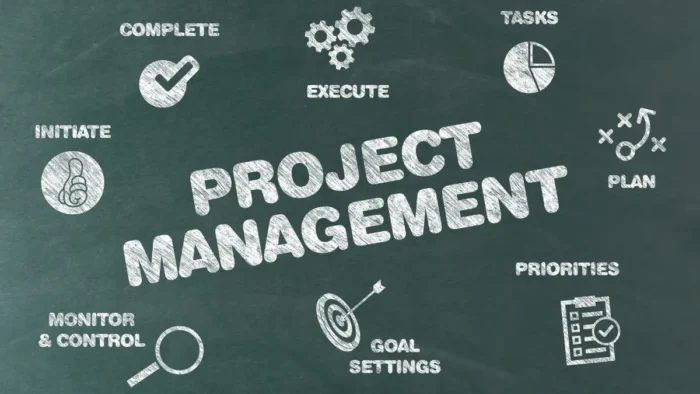Running a project feels like juggling ten balls simultaneously, and if you drop just one of them, it’s game over. Now, while every project is different, an experienced project manager can quickly and efficiently adjust to any project or industry.
For an inexperienced project manager, this would be a major problem. This is because with experience come many secrets of the trade. Here are ten such secrets you might not have heard before.
1. Setting deadlines is not as simple as you think
Before you face this task, it all will appear very simple – you have the time by which the project has to be done, so you set it. However, this wouldn’t leave you enough time for last-minute edits.
Also, there’s this thing called Parkinson’s law in project management, which implies that your employees will take as much time as you give them. If there are two hours of work, and you give them five hours, their work will stretch to five hours. It might not even be done by then since long deadlines encourage procrastination. Some of your employees may be unable to shake it off even in the final stage of the project.
At the same time, you don’t want to set it too short to avoid overworking them. Ideally, you would find the middle ground. One handy trick is to set a bit longer but not give them the real deadline. The purpose is that if you have to extend the deadline a bit, you can do it without being behind.
2. Standardization should be done early on
Early on in the project, it doesn’t matter how you do things as long as they are done. After all, while you have just three people working on the project, every form of communication is acceptable. Small teams are incredibly tight, and there’s always direct communication. People share work documents via IM platforms like Viber or Skype, and getting verbal confirmation on any task is easy.
The problem is that your team will soon outgrow this “casual” model. Instead, consider adopting collaboration tools, like those reviewed by Techopedia.com, before this happens. Standardizing early on will allow you to avoid bottlenecks in the future.
3. Streamlining saves a lot of time
A second you save every day will turn into a minute in 60 days. The thing is that you don’t save a second by streamlining. You’re saving minutes and dozens of minutes, which turns into hours of saved time monthly.
Automating tasks like invoicing, email marketing, and even customer management will speed up the processes that usually clog your workflow. This saves your team’s time and allows them to focus on creative tasks. No matter how powerful these platforms have become, humans must still do some tasks. However, if your overpaid human workforce is too busy handling data entry, this is not a very efficient use of your resources.
4. Learn how to delegate
You can’t do it all alone, even on a small project. If your staff members are waiting for your help for every task or, at least, waiting for you to nod before they confirm every decision, you’re creating an unnecessary bottleneck.
When delegating, you need to understand the full meaning of these words – it means giving someone both the task and the responsibility for it. By doing so, you’re showing them that you trust them to get the job done.
This is also great for morale, and it creates a scalable structure. After all, by giving them some responsibility early on, you’re preparing them for leadership positions further down the line.
5. Responsibility and consequences
This part is a bit… unpleasant, at the very least. However, people on the project must be aware of the consequences of negligence. If you set a deadline and it’s not honored, yet you move past this, what’s there to convince them to try the next time?
Just tread carefully since you don’t want to be accused of mobbing or harassment. Ideally, you could give them a warning. This could be verbal or written. Then, you need to consider a performance improvement plan (PIP). Most of your employees hate training, which is why this will feel like a punishment, even though it’s not even close to this.

6. Thinking about the next project
No matter how important, this is not the last project that you’ll participate in. Therefore, you must understand the importance of the lessons you can learn from this. All the data from the project needs to be collected and carefully analyzed.
Every problem, delay, or setback on the project should be noted. You need to prevent these bottlenecks the next time. Sure, the first time, they catch you by surprise, but the next time, you’ll be ready to face what’s ahead.
7. Agile or waterfall
When discussing the whole project, you have to define its completion clearly. In agile workflows, people work in stages. They make a product, get feedback, and make an upgrade. Waterfall development, however, has its start and finish.
The biggest difference with agile project development is that you won’t even feel like running a project. Since all of this happens in cycles, it feels more like an ongoing process. In other words, the process is never finished.
8. Don’t overwork your staff
Your business doesn’t start or end with this project. Just look at it this way: if your staff has to give it their 100% every day, work overtime, and work themselves out for the project to be completed, it’s you (the project manager) who hasn’t done their job right.
You need to plan the project so that it’s doable. Plan for delays and unforeseen occurrences, and let your staff rest when needed. If you’re working on some emergency patches, your staff might have to overwork themselves a bit, but then, when they’re done, give them a few days of well-earned (active) rest. Overworking your employees is a horrible practice that causes a high talent abandonment rate.
9. Deadlines are better than work hours
This is a hot debate for many reasons. You see, a deadline is a hit or miss. You either finish work by that date or you don’t; there’s no middle ground. At the same time, work hours are incredibly misleading. The number of hours spent “working” and the amount of active work in that period are incomparable.
Even in a traditional office, you can’t walk around your entire day, peeking at people’s monitors to check if they’re working. With remote monitoring software like Hubstaff, there are many ways to trick it. The worst part is that these platforms actively ruin your productivity. Employees feel monitored (not just feel; they are monitored), which induces anxiety and ruins performance.
10. Improve communication
Improving communication is more than just establishing the tool you’ll use. It’s about setting up a communication hierarchy and knowing the right channels. Imagine a worker contacting a CEO because one of the product packages was damaged. Imagine how inefficient and confusing this would be.
Everyone needs to know who to contact with their specific problem. Every problem should be reported through the right channel and directed to the correct person. If something unforeseen arises, they also need to know how and who to report this to.
With just a few tweaks, you can drastically improve your project management
When you set up the project right, you’ll have a much easier job at managing it. This is why we called the above-listed project management tips, not skills. Project management skills are problem-solving, critical thinking, dispute mediation, and more. The truth is that, for a successful project, you need to understand these principles and hone these skills.





